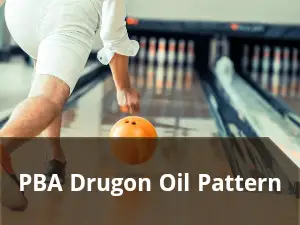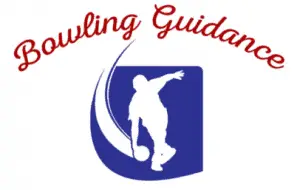
Unleash your inner dragon with the PBA Dragon oil pattern! This Dragon bowling lane oil pattern is introduced by Professional Bowlers Association (PBA) and bowlers are loving every bit of it. The versatility of using various kinds of bowling balls is what we all are totally digging. At the Players Championship 2019, this pattern received a lot of positive feedback. So how do you tame the dragon? I have everything you need to know about this oil pattern. So just sit tight while I give you some tips and tricks to play on the PBA Dragon pattern fearlessly.
What is the PBA Dragon oil pattern?
Out of the 16 PBA sports oil patterns, 8 of them are Animal Patterns. The PBA Dragon oil pattern is one of them. The 45 feet long PBA Dragon is an interesting oil pattern. The lane is pretty flat in the middle from about 12 to 12 and then it starts to taper out but you’ll find a lot of potential hook in between the 9 to 14 zone. The first thing you will notice is that the lane will have a lot of friction despite having 50 uL of oil per board.
The conditioner and oil transfer type are customizable. Bowling centers might customize the setting if they want to. This is why your experience with this pattern will vary from house to house, track to track. This is a tough pattern because the ratio is 1.92:1. But hey! Don’t be afraid, it’s not that difficult to score on this pattern.
So how much oil you’re going to face? Well, The total amount of Forward Oil is 15.55 mL and Reverse Oil is 10.05 mL. So you get a Total Volume Oil of 25.6 mL on the lane. The Total Boards Crossed in this pattern is 512 Boards (311 Boards- Forward Crossed and 201 Boards- Reverse Crossed).
How to attack on the PBA Dragon oil pattern?
Expect the PBA Dragon to play slick and long with not much of a free hook to the outside. This will occur especially if you bowl away from the pocket with a steeper angle. As mentioned, the pattern has a lot of friction which is a positive trait in most cases because it makes the pattern easy to play. It also has a lot of buff-out on the forward pass, So I believe, the midlane is more likely to dry up quickly.
If you follow the ‘Rule of 31’, we get, PL- 31 = the number of the board to the exit point. So, 45 – 31 = 14. Therefore, your bowling ball will exit the pattern around the 14 board. When you start playing, I would recommend staying in the middle and then migrating your feet to the left after the hook area develops.
One thing I don’t love about this oil pattern is that it changes your performance the longer your play on it. Since this bowling pattern breaks down pretty fast, your second or third game will be much different. Plus, you might experience poor performance and your score might go down.
Apart from this, the oil pattern actually supports a variety of bowling balls and gives you plenty of flexibility. Starting around 10 to 16 arrows and keeping your angles in front of you. I personally like to play straight as much as I can. Bu straight, I mean being up 5, up 6, or up 7 and kind of more to a direct line. So let’s say, my release arrow is 7 (Arrow board 7), so I always get my breakpoint around 9-10 board. But hey, that’s just my tactics. You can start a bit more inside, let’s say, 9 or 10, and this is when your breakpoint will match our expected breakpoint- 14 board.
If you think playing from the middle is giving you satisfactory ball reaction and pin knockdown by looking at any of the boards from 8-10; stick to that and maintain consistency in your ball throw. As soon as you notice the lane breaking down, move to the left without having any second thought. Just don’t play on the flattest part of the lane and wait for that flat part of the lane to be cut out a little bit through a lot of ball tracks going down the lane.
Which bowling ball is best for this pattern?
There is a certain type of bowling ball you should use to survive on this bowling lane oil pattern. If you use a stronger bowling ball with a symmetrical core, you will do just fine on this bowling pattern. If you’re new to this pattern, a benchmark bowling ball would be the Storm IDOL. Although it is slightly lazy down lane and doesn’t hook much, some of you might avoid it. But look on the bright side, you will be able to control your ball’s angle in the best way possible.
If you think the friction is a bit too much for you, you can go for Storm Super Son!Q bowling ball. Although it is more on the weaker side, it has a slow shape down lane. Plus, if you have both Super Son!Q and IDOL in your arsenal, you can start striking with IDOL and then use Super Son!Q as a spare ball.
Storm Omega Crux and Track Kinetic Obsidian are also great alternatives if you want your ball to go smooth down the lane and not curve super hard. The PBA Dragon is not for that. These two will also give you a lot of carrying and driving through the pins and they won’t force you to move left. Storm Hy-Road and Storm Hy-Road Pearl are also great substitutes.
For higher rev rate bowlers, I would recommend opting for Columbia300 Savage, Columbia300 Chaos, and Hammer Web. However, with Columbia300 Chaos, you will have to open up your angle more than you generally do. The Hammer Web may also create some trouble by not reading the lane properly. So, an average rev bowler will be more comfortable using that.
Conclusion
Alright, guys, that’s it for the PBA Dragon oil pattern. It is one of the challenging sports patterns by PBA. If you have a tournament coming, you better start warming up now. Just remember to use a strong coverstock and symmetrical core bowling ball and you will be fine. Don’t sweat it. Good luck fellas!

